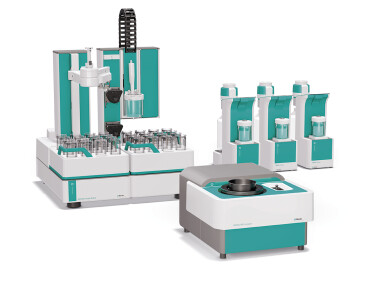Mass Spectrometry & Spectroscopy
Can We Create a Bionic Eye?
Oct 04 2018
In a move that has the medical sphere buzzing, researchers from the University of Minnesota have successfully created a 3D print prototype for the highly-anticipated "bionic eye", a futuristic concept that until now has been reserved for science fiction novels and robot movies.
It's a first-of-its-kind prototype, with the team asserting it marks a major step forward in the quest to develop bionic eye, which could be used to restore sight to blind people and those with poor vision. The findings were published in the peer-reviewed scientific journal Advanced Materials and explain how a 3D printer was used to stamp an array of light receptors onto a hemispherical surface to mimic the function of a working eye.
"Bionic eyes are usually thought of as science fiction, but now we are closer than ever using a multimaterial 3D printer," comments co-author of the study, Michael McAlpine.
Light receptors and silver ink
The team started with a hemispherical glass dome, then used a custom-built 3D printer to emboss light receptors using silver particle ink. Semiconducting polymer materials were also used to print photodiodes, which actively convert light into electricity with 25 percent efficiency.
"We have a long way to go to routinely print active electronics reliably, but our 3D-printed semiconductors are now starting to show that they could potentially rival the efficiency of semiconducting devices fabricated in microfabrication facilities," says McAlpine. "Plus, we can easily print a semiconducting device on a curved surface, and they can't."
Now, the team hopes to add more light receptors to the prototype to increase efficiency and heighten clarity. They're also on the search for a soft hemispherical material that can be clad in silver ink, then implanted into existing eyes.
3D eyes, ears and other organs
It's not the first time McAlpine and his team have broken new ground, with the researchers making headlines a few years ago for 3D printing a "bionic ear." They've also had success with printing artificial organs used for surgical practice, as well as developing an electronic "bionic skin" fabric.
Want to know more about the latest scientific developments? Following mounting pressure on global governments and companies to curb environmental pollution, Electron Paramagnetic Resonance, also known as EPR, has emerged as an innovative solution for monitoring pollution levels. For a closer look at how the technology is being used as a detection tool for carbon-based toxins don't miss 'Using Electron Paramagnetic Resonance (EPR) to Track Free Radicals in the Environment'
Digital Edition
Lab Asia 31.2 April 2024
April 2024
In This Edition Chromatography Articles - Approaches to troubleshooting an SPE method for the analysis of oligonucleotides (pt i) - High-precision liquid flow processes demand full fluidic c...
View all digital editions
Events
Apr 22 2024 Marrakech, Morroco
Making Pharmaceuticals Exhibition & Conference
Apr 23 2024 Coventry, UK
Apr 23 2024 Kintex, South Korea
Apr 23 2024 Seoul, South Korea
Apr 24 2024 Jakarta, Indonesia













.jpg)




